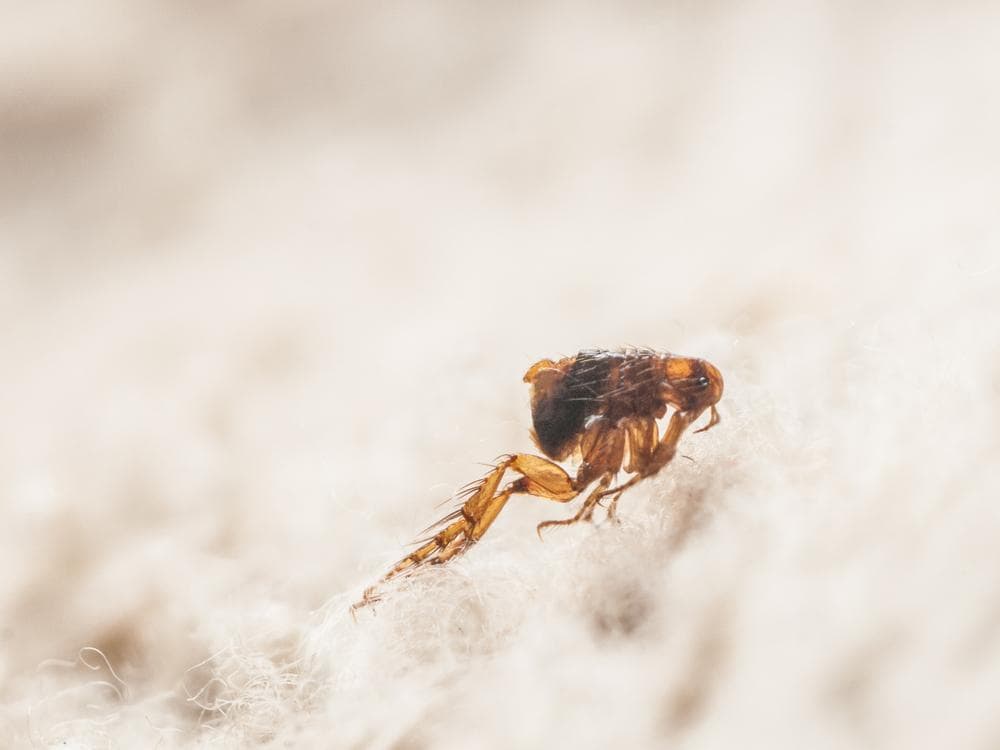
Black fleas, commonly known as cat fleas (Ctenocephalides felis), are tiny, wingless parasites that can be a nuisance to humans and their pets. These dark-colored creatures are most commonly found on cats and dogs but can also infest other animals and even humans.
Black fleas, also known as cat fleas, are tiny, wingless insects that are less than 1/8 inch long. They are dark brown to black in color, with bodies that are flattened from side to side. They have six legs, with the hind legs specially adapted for jumping. Their dark coloration is due to overlapping abdominal segments.
Physical Characteristics of Black Fleas
Black fleas are not a separate species but a term used to describe fleas that appear darker in color. Adult black fleas are typically less than 1/8 inch long and are dark brown to black in color. Their bodies are laterally compressed or flattened from side to side, which allows them to navigate easily through their host’s fur. Fleas have six legs, with their hind legs being extraordinarily adapted for jumping. This ability allows them to jump up to 8 inches vertically and 16 inches horizontally.
Black fleas are characterized by their tube-like mouthparts, designed for piercing the skin and sucking their host’s blood. They are wingless insects that can’t fly, and their dark coloration is caused by overlapping abdominal segments.
The Life Cycle of Black Fleas
The life cycle of black fleas is similar to other flea species and consists of four stages: eggs, larvae, pupae, and adults. Fleas lay their eggs on their host’s body, which then fall off into the environment. These eggs hatch into larvae, which then develop into pupae. The pupae eventually hatch into adult fleas, ready to find a host and start the cycle anew.
Signs of Black Flea Infestation
Identifying a black flea infestation can be challenging due to their small size. However, some signs may suggest their presence. These include:
- Excessive scratching or grooming by your pet
- Small, dark specks on your pet’s skin or bedding (flea dirt)
- Visible fleas on your pet or around your home
- Flea bites on humans, particularly around the ankles and legs
- Hair loss or skin irritation on your pet
Health Risks Associated with Black Fleas
Black fleas, like other fleas, can pose serious health risks to humans and pets. Fleas can transmit diseases like murine typhus and cat-scratch disease. They can also carry tapeworm larvae, which can be transmitted to humans and pets if they accidentally swallow an infected flea. Flea bites can trigger allergic reactions and may lead to secondary infections if not properly treated.
Conclusion
Black fleas are a common pest that can pose significant problems for pet owners. These tiny, dark-colored parasites can cause discomfort and potentially spread diseases. Therefore, it’s essential to recognize the signs of a flea infestation and take immediate action to treat it. Regular flea treatments for your pets and maintaining a clean environment can go a long way in preventing flea infestations.
If you suspect a flea infestation, it’s crucial to consult with a veterinarian for proper treatment for your pet and consider contacting a professional pest control service to help eliminate fleas from your home.
Frequently Asked Questions
How quickly can a flea infestation spread?
A flea infestation can spread rapidly. An adult female flea can lay up to 50 eggs a day, which can quickly lead to an infestation if not promptly addressed.
Can black fleas survive without a host?
Yes, black fleas can survive for several months without a host under ideal conditions. However, they cannot reproduce without feeding on a host’s blood.
What are the most common treatments for black flea infestations in pets?
The most common treatments for black flea infestations in pets include topical treatments, oral medications, flea collars, and flea shampoos. It’s essential to consult with a veterinarian to determine the most effective treatment for your pet.
Can black fleas live in human hair?
While fleas can jump onto humans and bite, they prefer to live and lay eggs on furry animals like cats and dogs. They do not typically live in human hair.
How can I prevent a flea infestation in my home?
Prevention methods include regular flea treatments for your pets, frequent vacuuming, washing pet bedding regularly, and maintaining a clean environment. In severe cases, professional pest control services may be required.












